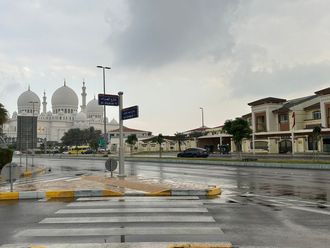
Dubai: The cost of minimum health insurance for dependent parents in Dubai has increased by up to 70 per cent for both new and renewable policies, Gulf News has learnt.
According to insurance brokers and industry experts, the minimum premiums, which prior to this were around Dh2,500, have now gone up to over Dh4,000.
Prem Mulani, executive director of Pioneer Insurance Brokers, said: “The annual limit for a basic policy as per DHA [the Dubai Health Authority] is Dh150,000. Some insurers have been offering this policy as [an] individual dependent parents’ plan, with the imposition of a six-month waiting period for any pre-existing conditions for first scheme membership and covered in full thereafter [as per DHA, emergencies are covered in full with no waiting period].”
“However, most insured members in this category are aged 65 and above and tend to have one or more chronic pre-existing conditions. At times, due to the changing lifestyle conditions and poor maintenance, this develops into an emergency and leads to in-patient treatment involving major surgeries. The result is that the annual limits of the policy end up being consumed,” said Mulani, adding that a growing number of such cases had prompted insurers to increase the premium.
"Regulations stipulate that no one can be denied coverage in Dubai, but with most dependent parents having pre-existing conditions at their age, low premiums were not sustainable and had to be increased."
— Dr Sanjay Tolani | Managing director, Goodwill World
Dr Sanjay Tolani, managing director of Goodwill World, which runs Goodwill Insurance Brokers, said, “When the basic policy was first launched, insurers were working on a potential risk pool and priced the product accordingly. But the risk pool and claims made were higher than they bargained for. Regulations stipulate that no one can be denied coverage in Dubai. But with most dependent parents having pre-existing conditions at their age, low premiums were not sustainable and had to be increased.”
The premium increase is being blamed largely on medical inflation and a high claims ratio. While medical inflation is the increase in the cost of health-care products and services, the claims or loss ratio is the difference between the premium collected by the insurance company from all its members, vis-a-vis the payments the insurance company has made to hospitals/clinics for the treatment of those members.
medical inflation rate in the UAE last year
But Dr Refaat said, “An increase in the cost of health-care services has a negative impact on loss ratios, and is a direct reason for the increase of premiums by insurance companies. However, and for the past three years, medical inflation has been controlled by the regulator and capped at a maximum of the UAE inflation rate, which was as low as 1.75 per cent last year for example. So in reality, most health-care providers either maintained their pricing, or in fact reduced it. Thus, there shouldn’t have been a negative impact on insurers from that side.”
He said policy coverage is matter of concern.
“Many of the dependents’ policies are not designed to actually provide proper and relevant health-care services that are required by the seniors holding it, especially from a benefit and access-to-medical facilities perspective. Most of these policies are being purchased by residents for compliance purposes to renew residency visas for their parents, and not for a proper health-care coverage.”
DHA: Costs based on market forces
In a response to a query by Gulf News, Abdullah Al Nuaimi, director of Health Funding Department at the DHA, said: “We have not approved or allowed any increase in the Essential Benefits Plan [which is for those earning below Dh4,000 a month] and have capped the premium for this bracket to ensure universal health coverage.
However, for the dependent’s category, the sponsor needs to provide insurance cover and there are several options available in the market. Some insurance companies have increased their prices, whereas some have not. We do not regulate this segment, it is based on market forces, claims ratio and several other international benchmarks.”












